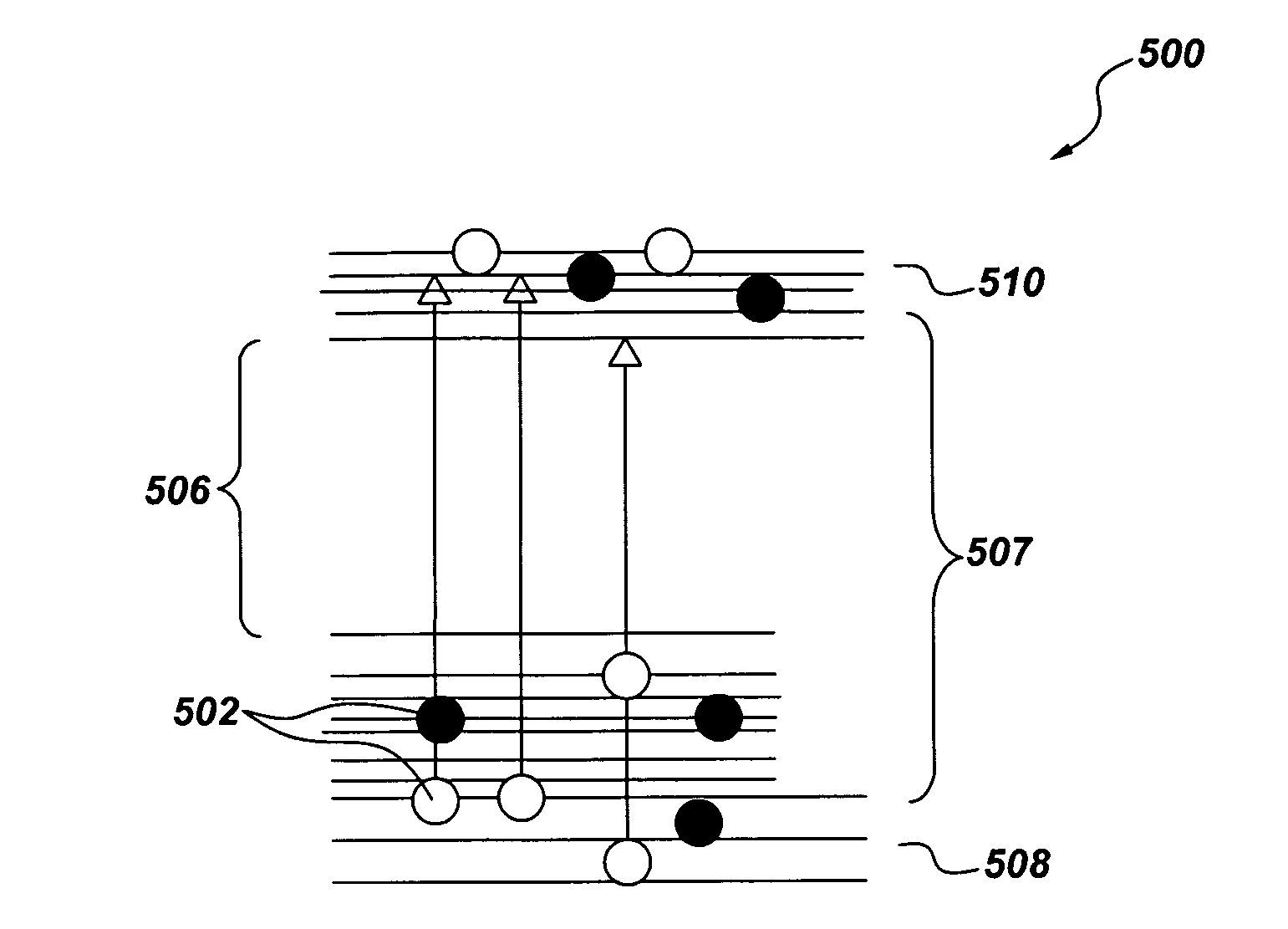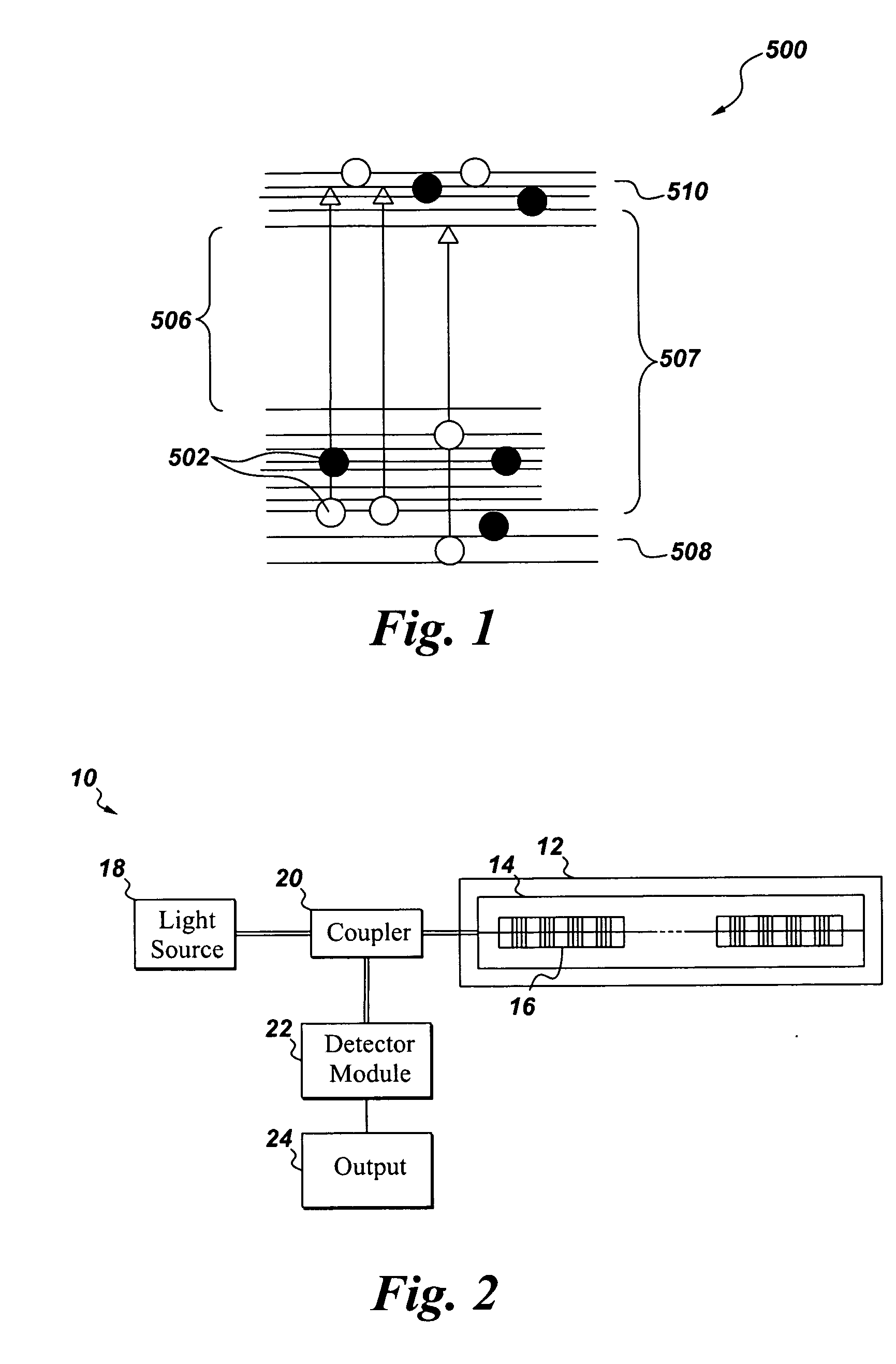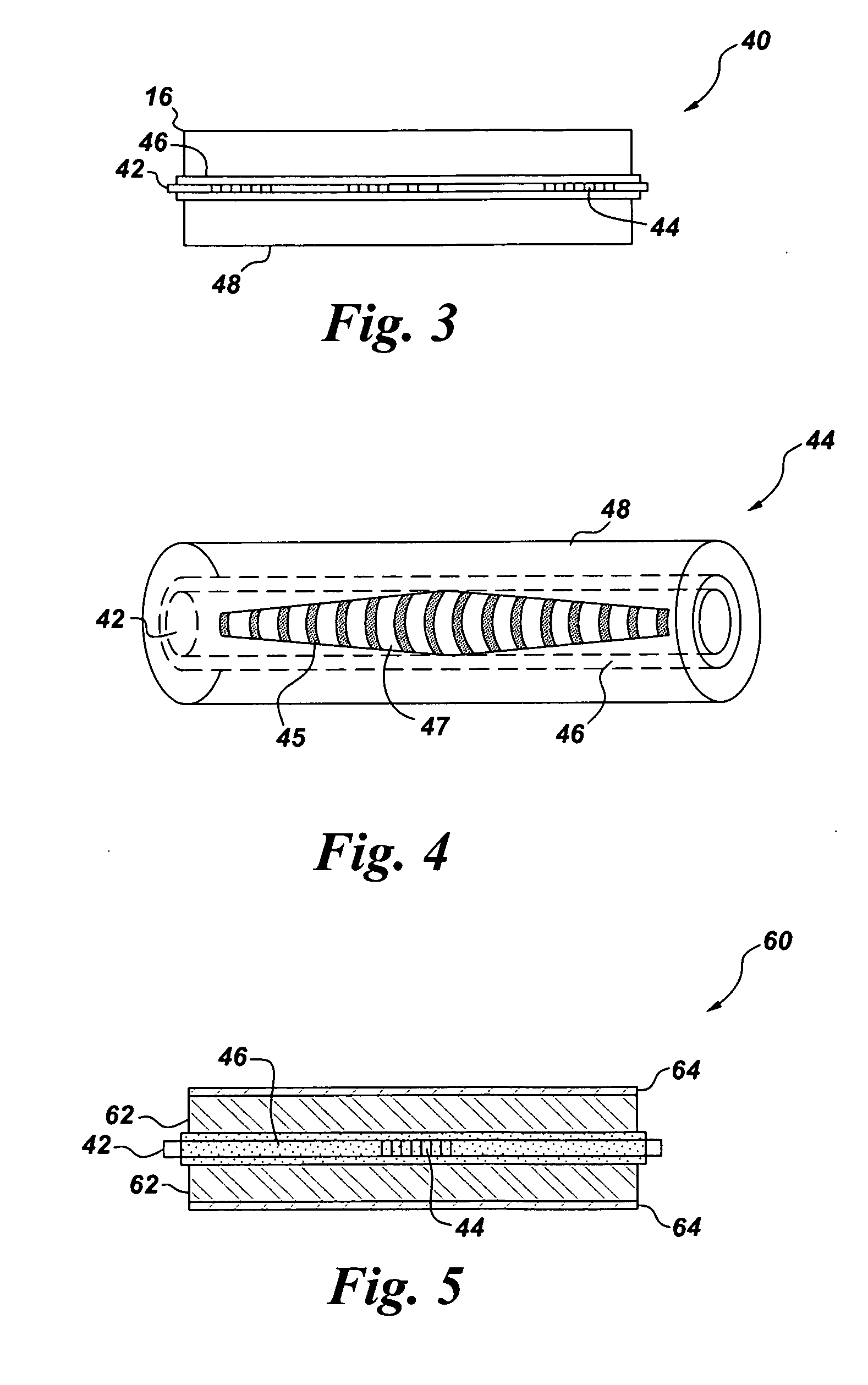Fiber bragg grating and fabrication method
a fiber bragg grating and fabrication method technology, applied in heat measurement, instruments, manufacturing tools, etc., can solve the problems of difficult to use a type i fbg as a sensor in higher elevated temperature environments, undesirable thermal instability of conventional ultraviolet light induced fbg sensors, and longer inscription time, so as to increase the mean coordination number and enhance the effect of photosensitivity
- Summary
- Abstract
- Description
- Claims
- Application Information
AI Technical Summary
Benefits of technology
Problems solved by technology
Method used
Image
Examples
examples
[0040]The examples that follow are merely illustrative and should not be construed to be any sort of limitation on the scope of the claimed invention.
[0041]FIG. 7 is a table of various dopant and co-dopant percentages and the resulting erasure temperatures for a silica fiber based FBG sensor. As used herein, the term “erasure” refers to a change in refractive index of the grating. For a reliable operation in an elevated temperature environment, it is desirable that the grating erasure temperature exceed temperatures that are anticipated for the intended operation. A commercially available photosensitive fiber core, after being doped and co-doped in the manner described above with respect to FIG. 6, may be inscribed a UV laser energy of about 100 milliJoules per square centimeter, for example, to provide a Type I FBG inscription. As can be seen from the table, by adjusting the co-dopant atoms, combinations of atoms, and / or weight percent, the erasure temperature can likewise be adjus...
PUM
| Property | Measurement | Unit |
|---|---|---|
| weight percent | aaaaa | aaaaa |
| weight percent | aaaaa | aaaaa |
| weight percent | aaaaa | aaaaa |
Abstract
Description
Claims
Application Information
 Login to View More
Login to View More - R&D
- Intellectual Property
- Life Sciences
- Materials
- Tech Scout
- Unparalleled Data Quality
- Higher Quality Content
- 60% Fewer Hallucinations
Browse by: Latest US Patents, China's latest patents, Technical Efficacy Thesaurus, Application Domain, Technology Topic, Popular Technical Reports.
© 2025 PatSnap. All rights reserved.Legal|Privacy policy|Modern Slavery Act Transparency Statement|Sitemap|About US| Contact US: help@patsnap.com



